Advertisements
Advertisements
Question
The given diagram shows two isosceles triangles which are similar. In the given diagram, PQ and BC are not parallel; PC = 4, AQ = 3, QB = 12, BC = 15 and AP = PQ.
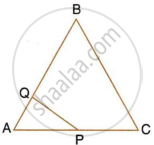
Calculate:
- the length of AP,
- the ratio of the areas of triangle APQ and triangle ABC.
Solution
i. Given, ΔAQP ~ ΔACB
`=> (AQ)/(AC) = (AP)/(AB)`
`=> (3)/(4 + AP) = (AP)/(3 + 12)`
`=>` AP2 + 4AP – 45 = 0
`=>` (AP + 9)(AP – 5) = 0
`=>` AP = 5 units ...(As length cannot be negative)
ii. Since, ΔAQP ~ ΔACB
∴ `(ar(ΔAPQ))/(ar(ΔACB)) = (PQ^2)/(BC^2)`
`=> (ar(ΔAPQ))/(ar(ΔABC)) = (AP^2)/(BC^2)` ...(PQ = AP)
`=> (ar(ΔAPQ))/(ar(ΔABC)) = (5/15)^2 = 1/9`
APPEARS IN
RELATED QUESTIONS
In the given figure, QR is parallel to AB and DR is parallel to AB and DR is parallel to QB.
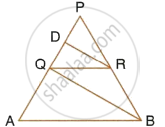
Prove that: PQ2 = PD × PA.
In each of the given pairs of triangles, find which pair of triangles are similar. State the similarity criterion and write the similarity relation in symbolic form:
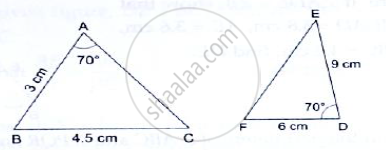
In each of the given pairs of triangles, find which pair of triangles are similar. State the similarity criterion and write the similarity relation in symbolic form:
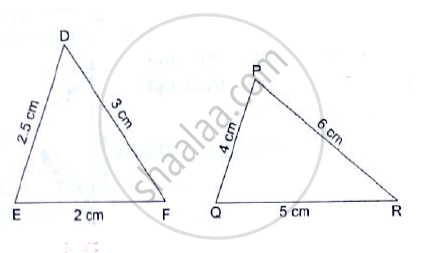
State the AA-similarity criterion
D and E are points on the sides AB and AC respectively of Δ ABC such that AB=5.6cm, AD= 1.4cm, AC=7 .2cm and AE = 1.5 cm, show that DE is parallel to BC
The length of a river in a map is 54cm. if lcm on the map represents 12500m on land, find the length of the river.
A line PQ is drawn parallel to the side BC of ΔABC which cuts side AB at P and side AC at Q. If AB = 9.0 cm, CA = 6.0 cm and AQ = 4.2 cm, find the length of AP.
In ΔABC, D and E are the mid-point on AB and AC such that DE || BC.
If AD = 8cm, AB = 12cm and AE = 12cm, find CE.
In figure, PQ is parallel to BC, AP : AB = 2 : 7. If QC = 0 and BC = 21,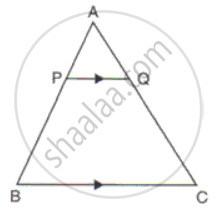
Find
(i) AQ
(ii) PQ
On a map drawn to a scale of 1:25000, a triangular plot of land is right angled and the sides forming the right angle measure 225cm and 64cm.Find: The area of the plot in sq. km.
